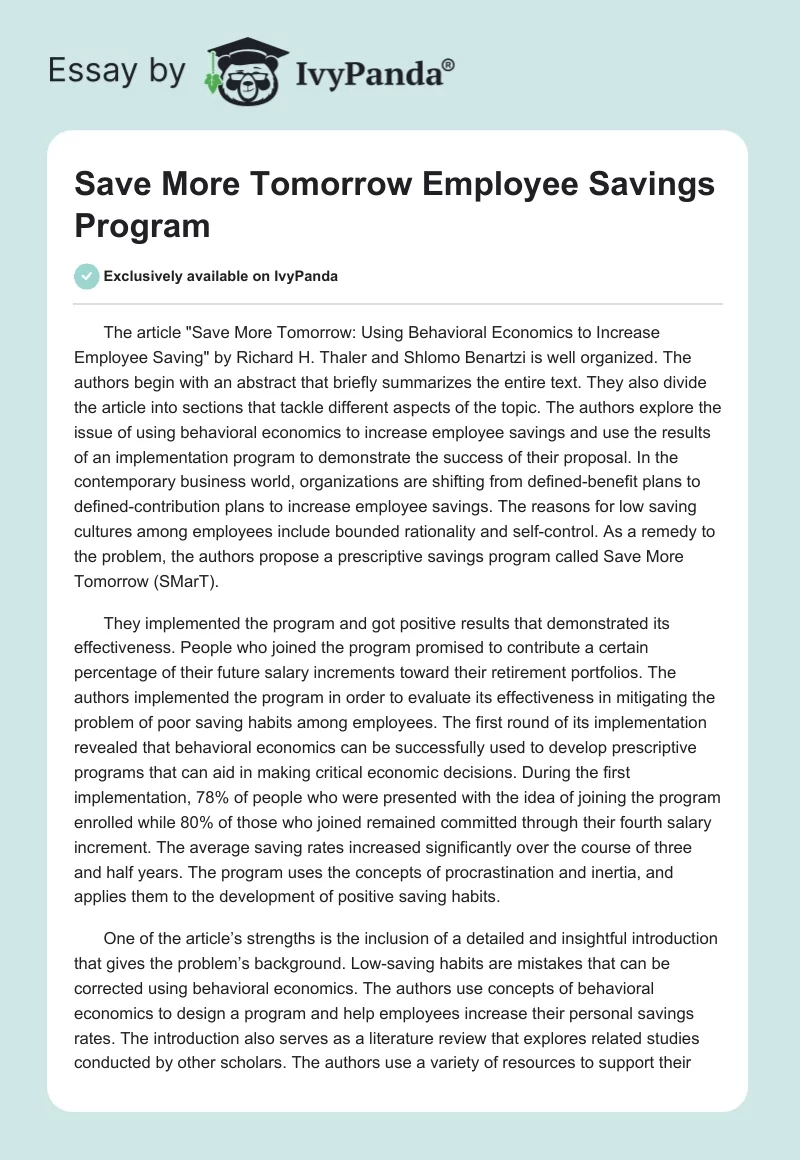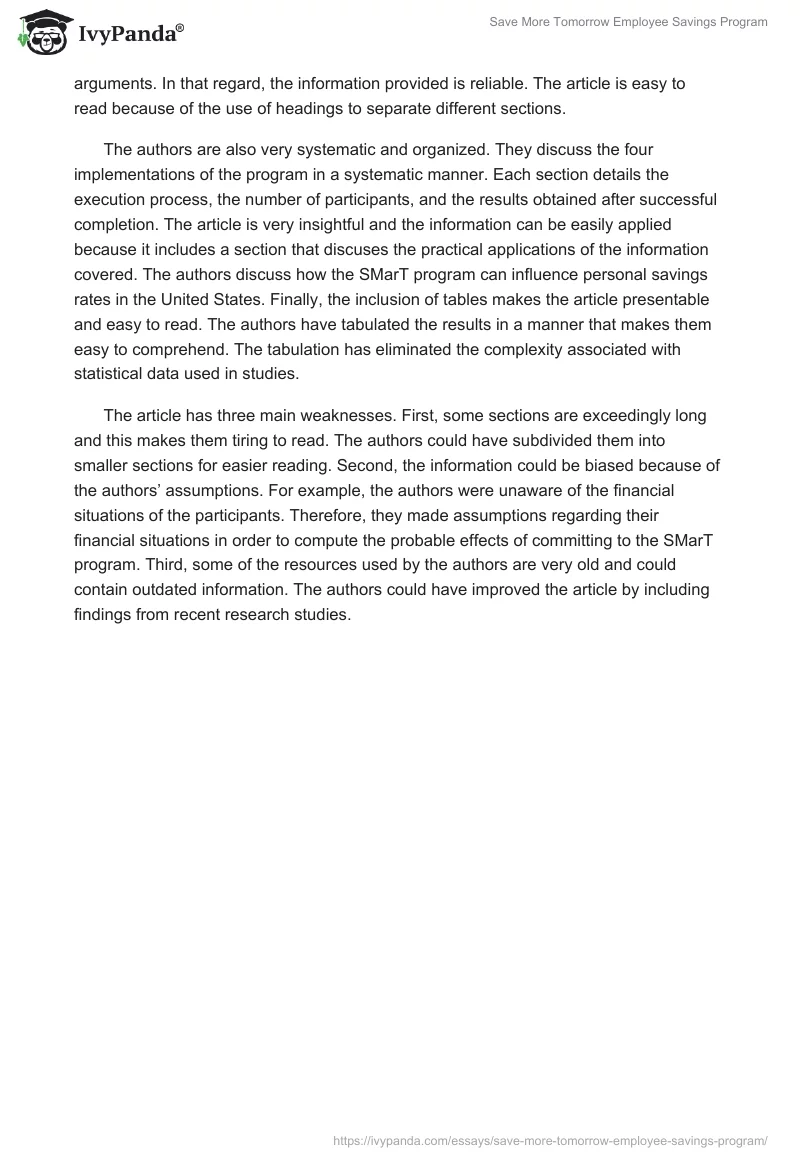The article “Save More Tomorrow: Using Behavioral Economics to Increase Employee Saving” by Richard H. Thaler and Shlomo Benartzi is well organized. The authors begin with an abstract that briefly summarizes the entire text. They also divide the article into sections that tackle different aspects of the topic. The authors explore the issue of using behavioral economics to increase employee savings and use the results of an implementation program to demonstrate the success of their proposal. In the contemporary business world, organizations are shifting from defined-benefit plans to defined-contribution plans to increase employee savings. The reasons for low saving cultures among employees include bounded rationality and self-control. As a remedy to the problem, the authors propose a prescriptive savings program called Save More Tomorrow (SMarT).
They implemented the program and got positive results that demonstrated its effectiveness. People who joined the program promised to contribute a certain percentage of their future salary increments toward their retirement portfolios. The authors implemented the program in order to evaluate its effectiveness in mitigating the problem of poor saving habits among employees. The first round of its implementation revealed that behavioral economics can be successfully used to develop prescriptive programs that can aid in making critical economic decisions. During the first implementation, 78% of people who were presented with the idea of joining the program enrolled while 80% of those who joined remained committed through their fourth salary increment. The average saving rates increased significantly over the course of three and half years. The program uses the concepts of procrastination and inertia, and applies them to the development of positive saving habits.
One of the article’s strengths is the inclusion of a detailed and insightful introduction that gives the problem’s background. Low-saving habits are mistakes that can be corrected using behavioral economics. The authors use concepts of behavioral economics to design a program and help employees increase their personal savings rates. The introduction also serves as a literature review that explores related studies conducted by other scholars. The authors use a variety of resources to support their arguments. In that regard, the information provided is reliable. The article is easy to read because of the use of headings to separate different sections.
The authors are also very systematic and organized. They discuss the four implementations of the program in a systematic manner. Each section details the execution process, the number of participants, and the results obtained after successful completion. The article is very insightful and the information can be easily applied because it includes a section that discuses the practical applications of the information covered. The authors discuss how the SMarT program can influence personal savings rates in the United States. Finally, the inclusion of tables makes the article presentable and easy to read. The authors have tabulated the results in a manner that makes them easy to comprehend. The tabulation has eliminated the complexity associated with statistical data used in studies.
The article has three main weaknesses. First, some sections are exceedingly long and this makes them tiring to read. The authors could have subdivided them into smaller sections for easier reading. Second, the information could be biased because of the authors’ assumptions. For example, the authors were unaware of the financial situations of the participants. Therefore, they made assumptions regarding their financial situations in order to compute the probable effects of committing to the SMarT program. Third, some of the resources used by the authors are very old and could contain outdated information. The authors could have improved the article by including findings from recent research studies.


